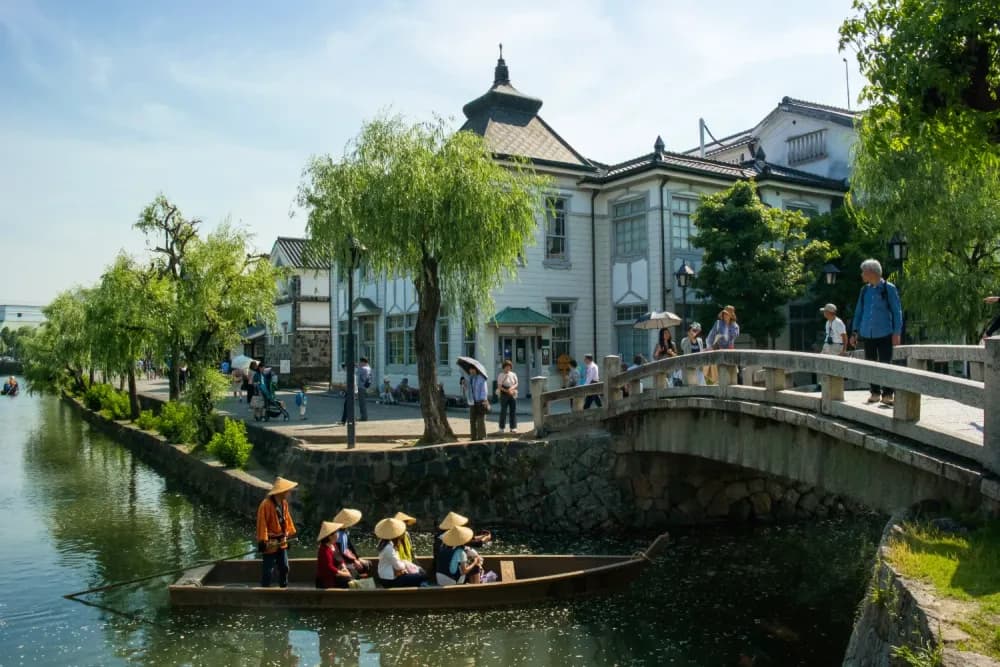The Chugoku Region is located at the western-most tip of Honshū (本州, Honshū) and is most famous for the Seto Inland Sea (瀬戸内海, Seto-naikai).
The southern part of the region is known as the San'yō (山陽, Sanyō) region, and is easily accessible by the Sanyo Shinkansen.
Hiroshima Prefecture (広島県, Hiroshima-ken) is home to the city of Hiroshima, that hosts the Atomic Bomb Dome as a reminder of the horrors of war, the island of Miyajima, where the floating torii (鳥居) gate of Itsukushima Shrine, and Japan's most popular cycling route, the Shimanami Kaido.
Okayama Prefecture (岡山県, Okayama-ken) is home to Kurashiki (倉敷), a town with a beautifully preserved Edo era (1603-1867, 江戸時代, Edo-jidai) merchant canal district. Yamanashi Prefecture is famous for Mine, where Akiyoshido, Japan's largest limestone cave, and Akiyoshidai, a sprawling limestone plateau are located.
The northern part of the region is known as the San'in (山陰) region, and can be difficult to access by train.
Tottori Prefecture (鳥取県, Tottori-ken) is famous for Tottori city that is home to the Tottori Sand Dunes, the only desert in Japan, as well as the sand statues in The Sand Museum. Shimane Prefecture (島根県, Shimane-ken) is home to the Izumo Taisha, one of Japan's oldest and most important shrines (神社, Jinja), as well as Matsue Castle, one of the Twelve Original Castles (日本現存十二天守, Nihon Genzon Ju-ni Tenshu) in Japan.

